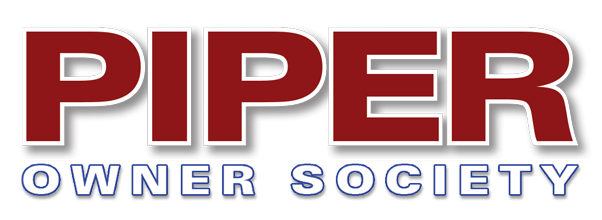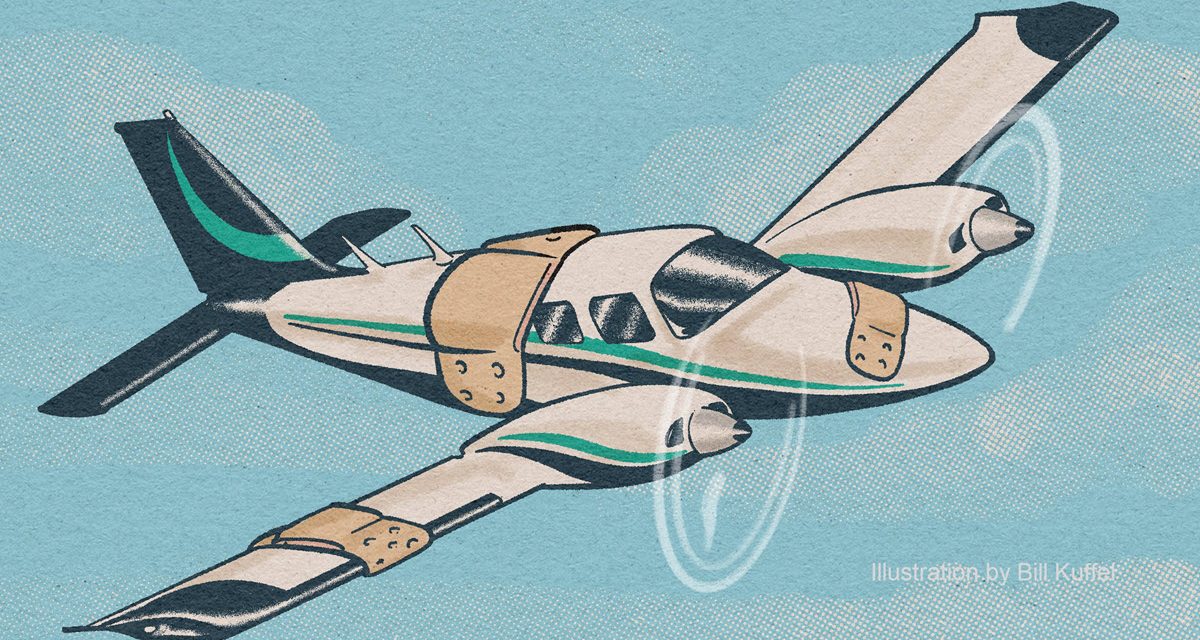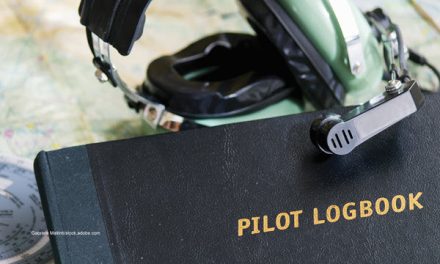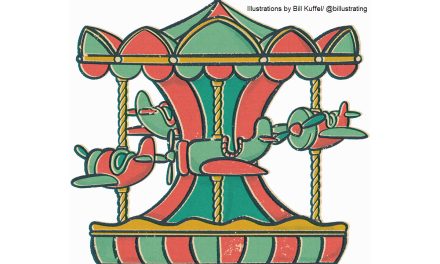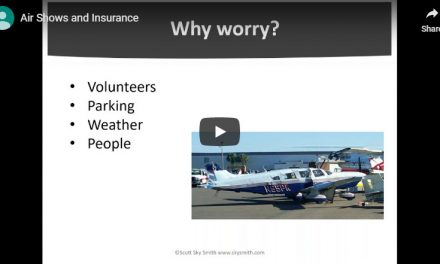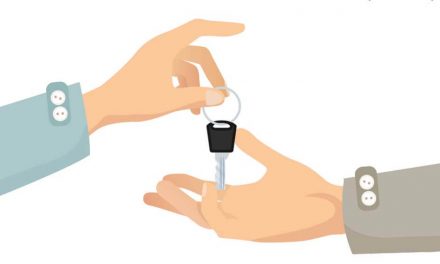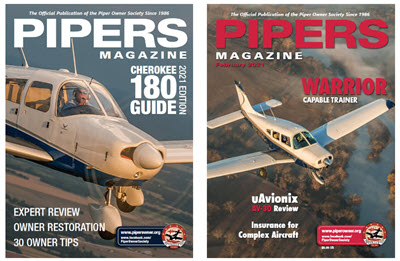Recently I wrote about alternate ownership options; things like limited rental, partnerships, and flying clubs. As I said before, there is a time to own and a time to rent or borrow.
It is important to remember that even if you don’t own the aircraft completely, or at all, you still have responsibility. If you are the pilot and are found negligent in the event of an accident, you might need to get out your checkbook and pay for the damage or maybe purchase non-owned insurance.
What Is “Non-owned” or “Renter’s” Insurance?
Non-owned is considered “surplus” coverage. It is protection for the pilot of an aircraft he or she does not own (like the name says). In an accident, the claims department will first look to the owner of the aircraft for coverage. If that is not appropriate, then they look at the non-owner pilot who was flying the plane.
What Was the Real Reason for Non-owned Insurance?
FBO’s were notorious for telling renters that they were covered, when only the FBO was actually covered. You, the renter, would fly the plane and wreck the aircraft, and the insurance company would pay the owner for repairs. The FBO would “subrogate the rights” for reimbursement to the insurance company after the claim was settled. But, if you (the non-owner pilot) were found liable, the insurance company would then sue you for the money they just paid in the claim. Okay, I know I’m not a lawyer, but this is the gist of how the system works.
That’s where non-owned insurance steps in. It is designed solely for the purpose of paying for your liability in someone else’s aircraft!
For years, non-owned liability and hull protection could be purchased at fairly low prices (it’s still reasonably priced), which was great for the consumer but bad for the insurance companies. Claims started to roll in and the insurance companies started to lose money. Kind of like a black hole! Many of the aviation insurance companies discontinued offering non-owned insurance, especially the low-cost polices, because of the large number of losses.
I always wanted to ask what the underwriters were thinking. Most of the people buying the non-owned coverage were student pilots learning how to fly or their CFI’s training said pilots to fly. That begs the question, didn’t the underwriters expect losses covering beginners and their instructors?
A few companies got back into the non-owned insurance business. The basic policies are designed for single engine, fixed-wing pilots, or want-to-be pilots. The premiums between all the companies are pretty comparable. In addition, there are variations that offer “non-owned” insurance for helicopters, seaplanes and multi-engine aircraft.
Included Non-owned Insurance
Additionally, many aviation underwriters are including non-owned coverage in a regular aircraft insurance policy. You might think this isn’t important, but if you fly a friends’ aircraft, or yours is down for service and you rent a plane, you might still need the coverage. So next time you buy insurance for your aircraft, the agent will probably tell you that one of the “extras” is non-owned coverage.
Aviation Non-owned Basics
First, most aviation underwriting companies call the coverage non-owned, because the requirement for the policy is that you can not own any portion of the plane you are using the policy to cover.
This is kind of confusing if you are in a flying club and you have a membership that owns a percentage of the aircraft. In that case, it’s not really a non-owned aircraft. But the insurance companies do take that into account. Ask your broker if your ownership in a flying club has a maximum owner percentage limit. One time I was told 10 percent, another time it was 20 percent. The only way to find out is to ask.
This leads me to the use of the term “renter’s insurance.” Since you don’t own an aircraft, you would need to “rent” an aircraft so the term “renter’s” insurance is used. But “renters” isn’t totally accurate, because a non-owned policy will cover a pilot who borrows, rather than rents, a friend’s aircraft. I don’t have to rent the aircraft, I just can’t be an owner of the aircraft.
To be effective, the coverage (whether an add-on or standalone policy) requires that you be qualified in the aircraft and meet the FAA requirements. The policy or endorsement needs to cover the particular type of aircraft you’re flying and you need the permission of the owners. (I suppose a sympathetic jury would side for a plane thief if he crashed a stolen plane, but I’m not sure that’s the right way to use a non-owned policy.)
If the pilot criteria are met, you could have non-owned coverage. Liability levels vary with each company, usually from $250,000 to $1,000,000 in liability for bodily injury and property damage. Non-owned is like a regular aircraft policy in that the passenger is usually sub-limited to a lower level such as $25,000 or up to $100,000. Also, if the non-owned coverage is an add-on to an aircraft policy, the limits are generally the same as the existing policy. Oh, and sometimes you can also get coverage for “deductible reimbursement.”
There are a few variables in the hull coverage limits in an add-on, non-owned policy. Your policy might provide the same coverage as your hull coverage limit or some designated amount, whichever is higher or lower.
An important note here. What you purchase for your own aircraft is all you get. If all you have is liability only on your aircraft, that’s all you get in non-owned coverage. Same with ground not in motion, etc.
Be careful — some of the insurance companies offer non-owned, add-on endorsements but they have stipulations. Some will not offer coverage in aircraft that are different than the insured aircraft. Make sure to read the details about what type of aircraft you can operate to meet policy requirements.
Only One Owner
If you have the aircraft insured in more than one name (you and your best friend), there might not be any coverage. If you have the aircraft insured in a corporate name, again there might not be any coverage. There are lots of variables. Make sure you carefully read the policy. Like other policies, look for coverage that is “per passenger” and make sure family members are not restricted.
The other portion of non-owned is “hull” coverage. Non-owned hull (liability) coverage is usually sold in increments of $5,000, $10,000 or more. This is the expensive part of non-owned. The prices start at $50 per year for $5,000 of hull protection. Sometimes you pay more for non-owned than for a complete policy if you owned the plane.
How Much is Enough?
Since hull liability is expensive, you have to decide how much to buy. Many will tell you to buy enough to cover the FBO’s deductible. That’s easy, buy the deductible reimbursement. As we discussed earlier, the insurance company can still come after you for the rest. Another option has been to buy coverage for the most expensive aircraft you fly. If you fly a newer 172 or Warrior, you could be paying over $2,000 a year for protection. I have been told that you should buy enough coverage for about 50% to 75% of the hull value of the aircraft you fly. This would cover many of the mishaps that might happen, such as a prop strike and engine tear down. If it was totaled, you might not have enough, but hopefully there would be a salvage value to work with.
And think about your situation. If you are renting and operating the aircraft without the rental company’s CFI, then you are the party responsible. If you are in a situation where the rental company CFI is always in the aircraft, you might have to rethink the amount of coverage you buy. In most cases, the CFI would probably be the responsible party.
Sometimes the FBO has additional renters’ coverage included, but it might not provide enough coverage for the plane you’re renting. Ask them if they do. If they don’t know, see if they can find out. Their customers should know how much protection they have.
And again, if you are in a flying club, see if the member pilots are protected by the insurance company and what kind of coverage is available. You still might need non-owned coverage.
